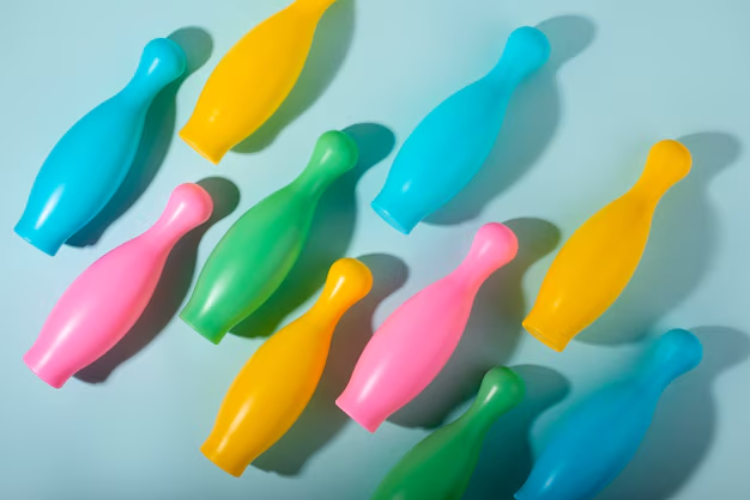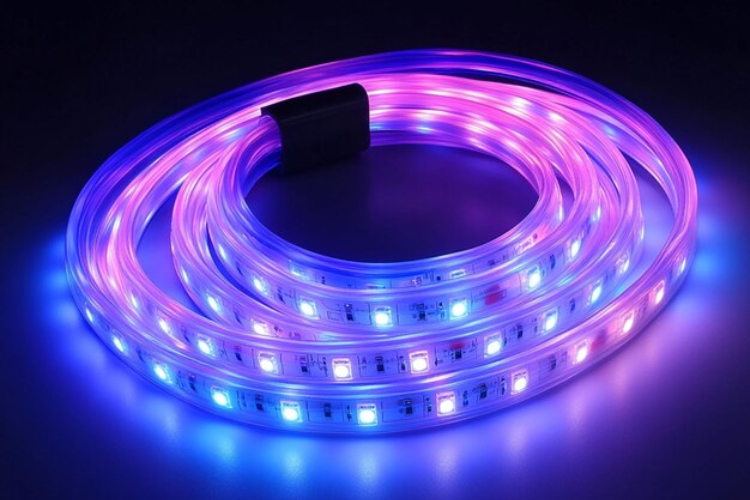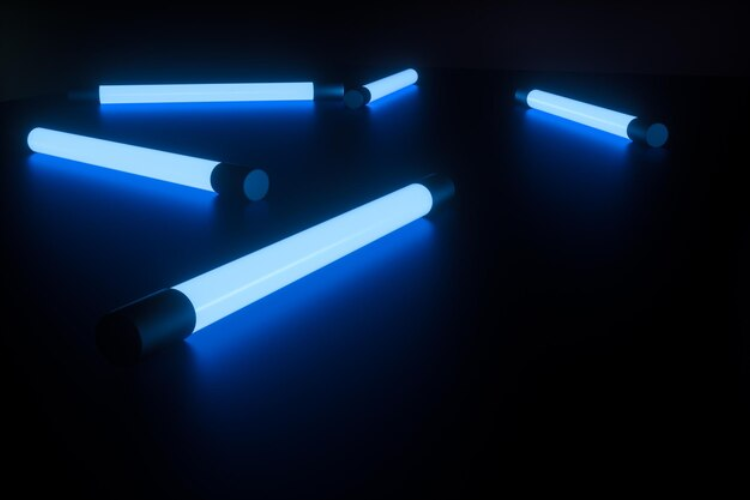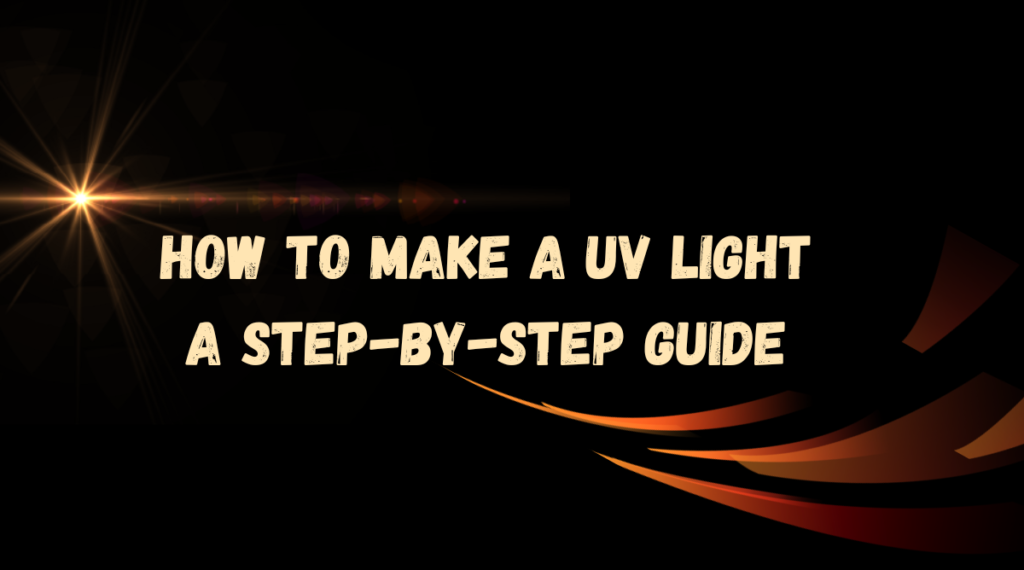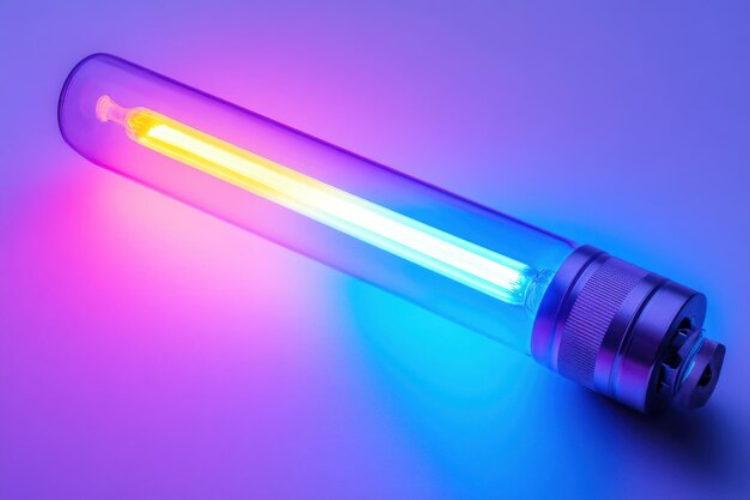Master Epoxy Curing with UV LED Strips – Fast & Flawless!
Master Epoxy Curing with UV LED Strips – Fast & Flawless! Read More »
Check out our black light collection!
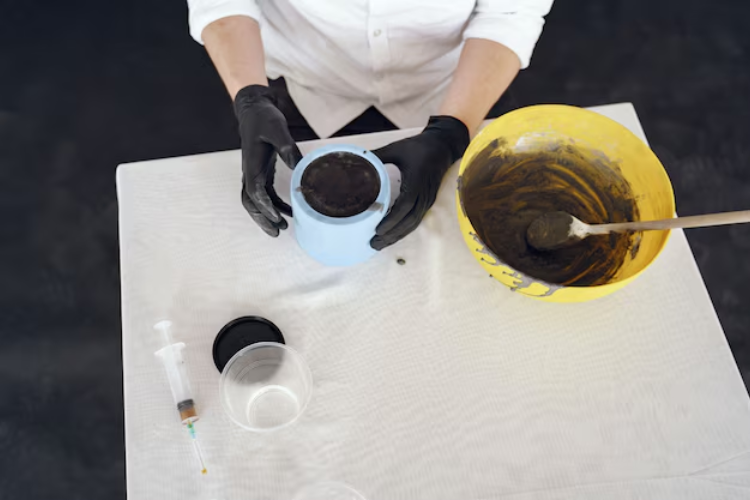
Crafting with epoxy resin has transformed how artists and hobbyists bring their artistic designs to life. The crystal-clear, glass-like finish offers unmatched versatility, making it ideal for jewelry, tabletops, woodworking, and intricate objects. Whether you’re embedding elements or creating massive statement pieces, this secret ingredient delivers both strength and durability.
With UV LED strip lights, the curing process becomes faster and more efficient, allowing crafters to move quickly to the next step without the long wait times of traditional methods. This method has become a popular choice among enthusiasts, professional artisans, and DIY crafters looking to achieve precision in their projects.
The evolution of epoxy resin dates back to the 1940s and 1970s, yet its applications have expanded, now used in military, aerospace, and crafting industries alike. The introduction of two-part and single-part mixtures has made the process more accessible, ensuring quick curing times while maintaining excellence in results. From encapsulating creativity in small trinkets to designing massive masterpieces, this alchemy blends science with imagination.
Hobbyists and experts alike now rely on this time-saving wonder to turn their visions into reality, pushing the boundaries of what’s possible in crafting and design.
The Benefits of Using UV Light For Epoxy Resin
Faster Curing Time with UV Light
Using UV light for curing epoxy resin offers a significant advantage over traditional methods. Instead of waiting several hours or days for thick layers to cure, you can achieve results in minutes, saving valuable time. This fast and convenient way to cure resin improves efficiency, giving you more time to focus on the next part of your project. The faster process not only reduces curing time but also ensures a quick turn-around, allowing you to complete tasks faster and more effectively. The enhancement in speed is a game-changer for creators looking for a reliable and alternative method to cure resin efficiently
Increased Efficiency with UV Light
UV light curing is an efficient process that eliminates the need for drying methods that take longer and often pose a safety risk. Compared to traditional methods, UV light drastically shortens the time required to cure epoxy resin, helping you complete projects faster. This faster curing increases productivity, allowing for a quicker turnaround and reducing the chances of damaging materials. By using UV light, you can ensure more consistent results without the heat that may affect certain resins. Identifying these differences in curing methods is important for anyone working with epoxy resins.
Enhanced Clarity:
Using UV light for curing epoxy resin ensures a crystal-clear and glossy finish on your projects. This method is key to achieving transparency, making it perfect for encapsulating objects or creating jewelry. UV light cures the resin uniformly, resulting in a smooth, flawless surface. The light promotes a desirable finish, enhancing both the visual appeal and durability of the final product. If you want your epoxy resin to look its best, using UV light is the way to go.
Reduced VOCs:
When using UV light for curing epoxy resin, there is a significant reduction in volatile organic compounds (VOCs) released during the process. Unlike traditional methods, UV light eliminates the need for heat and significantly reduces emissions, making it a more eco-friendly option. This not only helps in maintaining health and protecting the environment but also ensures that you are working with safer materials. Proper preparation and techniques are crucial when using UV light to cure epoxy resin.
Epoxy and UV Resins – What Makes Each One Special
Epoxy resin is a two-part mixture that, once combined, creates a sticky substance. After being poured onto wood, metal, or plastic, it must be left to cure for several hours or even longer, depending on temperature and humidity. This process creates a hard, durable surface that can withstand wear and tear. However, the curing time can be lengthy, requiring patience and careful environmental control to ensure the best results.
In contrast, UV resins cure much faster when exposed to UV light, which makes them ideal for smaller projects like jewelry making or small crafts. These resins remain soft and pliable until they are exposed to UV light, which allows for shaping and molding before the cure happens. The quick curing process of UV resins makes them a great choice for projects that require a fast turnaround time, providing an efficient solution for those looking to complete their tasks in a shorter amount of time.
Factors to Consider When Choosing a UV Flashlight for Epoxy Resin
When it comes to selecting a UV flashlight for epoxy resin, there are a few factors to consider:
1. UV Wavelength
When selecting a UV flashlight for epoxy resin, one of the most crucial factors to consider is the UV wavelength. Different wavelengths, such as 365nm and 405nm, are optimal for curing various types of resins. It is important to follow the manufacturer’s instructions to ensure the proper wavelength is used, as it helps achieve the best curing results. A flashlight with the right wavelength will meet the curing requirements and ensure the epoxy resin cures efficiently and evenly, providing a smooth, professional finish to your project.
2. Power Output
When choosing a UV flashlight for epoxy resin, consider the power output. A higher power leads to a faster curing time but must be balanced to avoid overheating or causing yellowing and discoloration. For most epoxy projects, a flashlight with a power range of 3W to 10W is sufficient. Make sure to find the right balance for the curing process to avoid unwanted side effects.
3. Battery Life and Rechargeability
When choosing a UV flashlight for epoxy resin, consider its battery life and rechargeability. A flashlight with a longer battery life means you can complete more projects without interruption. Look for one that is rechargeable to save on costs and maintain convenience. This will allow for smoother curing without frequent battery changes.
4. Durability and Build Quality
When selecting a UV flashlight for epoxy resin, ensure it has durability and build quality. A sturdy flashlight made with strong materials will withstand wear and tear from frequent use. Look for one with a comfortable grip and an on/off switch for ease of use during extended periods of work. These factors are crucial for ensuring reliable performance in your projects.
5. Size and Portability
When choosing a UV flashlight for epoxy resin, size and portability are key. A compact, lightweight flashlight makes it easier to carry and handle during resin application. This flexibility is essential for working on different projects in various locations, providing more convenience for your creative endeavors.
The Curing Process:
The curing of epoxy resin happens when UV light triggers a chemical reaction. The photoinitiator in the resin absorbs the light and accelerates the polymerization process, making the material hard and durable. This reaction leads to a glossy finish and enhances the mechanical properties of the cured resin. For best results, follow the manufacturer’s instructions and ensure you mix the components in the correct proportions on a clean, dry surface to avoid moisture or other substances that could interfere with adhesion.
- Prepare your workspace for epoxy resin: Set up a clean, well-ventilated area for working with UV light. UV light can harm your eyes and skin, so always wear protective gear, including UV-blocking safety glasses and gloves. Make sure the space is appropriate to ensure your safety and the best results for your epoxy project.
Mix the epoxy resin:
Start by preparing your epoxy resin according to the manufacturer’s instructions. Mix the resin and hardener thoroughly for an even mixture. Stir slowly for about 3 to 5 minutes to avoid bubbles. To help the curing process, you can warm the mixture slightly in a warm water bath (up to 100°F/38°C) before pouring it. This helps reduce viscosity, allowing air bubbles to pop easily and ensures a smooth finish.
- Apply the epoxy:
Apply the epoxy resin to the surface of your project using a suitable method like a brush or syringe. Spread it evenly to ensure it covers the entire area. Make sure to apply a consistent layer for the best curing results.
- Remove air bubbles:
Remove air bubbles from the epoxy surface by gently using a heat gun or torch. Pass it over the surface to eliminate bubbles formed during mixing or application. This helps maintain a smooth finish, preventing trapped air in layers or crevices.
- Cure the epoxy: Cure the epoxy using the UV light source, adjusting the intensity based on the epoxy layer thickness. The curing process can take a few seconds to minutes depending on the type of resin. Always follow the manufacturer’s guidelines for the best results, especially when creating custom jewelry or intricate designs
Clean up: After completing the work. You should clean all the tools with cleaning agents.
Dispose of waste: After curing your epoxy pieces, it’s important to properly dispose of any waste. Follow your manufacturer’s guidelines to safely dispose of materials like molds or leftover resin. Proper disposal ensures no harm to the environment and allows for a clean, organized workspace
Benefits of Using UV Light for Epoxy Curing
Fast Epoxy Curing with UV Light :
UV light enables a faster curing process, allowing your epoxy resin to cure in just a few seconds. This method speeds up the curing time without compromising the strength or quality of the final piece. It’s an efficient way to complete projects quickly and move on to the next one.
Durability and Build Quality:
UV light curing creates a strong and durable bond in epoxy resin, offering superior strength compared to other methods. It produces a cured surface that is resistant to wear and tear. Choosing a good build quality flashlight ensures that your project holds up over time, especially with extended use.
Safe and Secure:
UV light curing offers a clean, safe process. Unlike methods that require heat or chemicals, it does not produce harmful fumes or byproducts. It’s an environmentally friendly option for epoxy curing.
Battery Life and Rechargeability
For larger projects, the battery life and rechargeability of a UV flashlight are essential. Opting for a rechargeable flashlight with lithium-ion batteries ensures extended curing times. This cost-effective solution reduces the need to replace expensive bulbs and minimizes maintenance.
Overall, using UV light to cure epoxy resin is a smart choice. It is fast, strong, clean, safe, and cost-effective. Whether you are a professional or a DIY enthusiast, UV light curing can help you achieve the best results for your project.
The Role of UV Lamps and Flashlights
UV lamps and flashlights are crucial for curing epoxy resin. They emit specific wavelengths of UV radiation that react with the photoinitiator, causing the resin to harden. Choosing the right UV wavelength (365nm or 405nm) is essential for optimal curing. Make sure to check the manufacturer’s instructions for proper selection. Some devices emit both UVA and UVB, which can be harmful, so it’s important to use a UV flashlight that suits your resin’s needs without causing overheating or damage.
When selecting your lamp or flashlight, consider the output and intensity. The power can range from a few watts to several hundred, and too much can cause unwanted effects like discoloration or yellowing. Devices between 3W and 10W are sufficient for most projects. Also, for larger projects requiring extended curing times, opting for rechargeable devices with lithium-ion batteries offers convenience and cost-effectiveness. A compact, lightweight tool with a reliable on/off switch and a comfortable grip allows for greater flexibility and ease of use in creative endeavors.
Application of UV Light for Epoxy Resin
UV light is a popular and efficient method for curing epoxy resin. It’s especially effective for small projects like keychains, pendants, and bezels, making it ideal for jewelry making and sealing. The precise control of UV light allows for quicker, more consistent curing, even in tight spaces. Depending on the project, choosing the right type of UV light source is crucial, as some are better suited for larger areas while handheld devices are perfect for smaller, detailed work. With the right lamp or flashlight, you can achieve great results in a fraction of the time compared to traditional curing methods..
Preparation and Curing Techniques for Epoxy Resin
Before mixing epoxy resin, make sure to follow the instructions on the package carefully. It’s crucial to ensure the right ratio of resin and hardener to achieve proper curing. By combining them in the correct proportions, the epoxy will cure properly, giving you the best results for your project.
Thin Layers
When applying epoxy resin, it’s important to spread it in thin layers. This helps ensure the resin cures properly and avoids a tacky or uneven finish. Thick layers can make curing difficult and result in an imperfect final surface.
Air Bubbles
When you combine the resin and hardener, do it gradually and carefully to avoid air bubbles. If bubbles form, use a heat gun or a toothpick to gently remove them. This will help the epoxy finish smooth and give your final product a professional look.
Colorants and Pigments
When adding colorants or pigments to your epoxy, be sure to combine the resin and hardener carefully. This will help avoid creating any air bubbles. The right amount of pigment can make your final product look smooth and professional.
Curing with UV Light
To cure epoxy resin properly, you need a strong enough UV light source, like a lamp or flashlight. Depending on your project, exposure times will vary to ensure it cures completely.
Set and Cured Resin
To check if the epoxy resin is cured properly, gently press the surface with your fingernail. If it leaves a mark, it’s not fully cured. Once it’s hard to the touch and no longer tacky, the resin is set.
Uncured Resin
If your epoxy resin isn’t cured properly, it may still be soft or tacky. To fix this, follow the curing instructions carefully and apply UV light from a strong source. If needed, remove and start over to ensure the resin cures properly.
Factors Affecting Curing Time
To give you a better understanding of the factors that influence the curing time of epoxy resin under UV light, let’s take a closer look at each one:
- Type and Brand of Resin:
When choosing an epoxy resin, consider the brands and kinds available. Different formulations affect curing times, so always follow the manufacturer’s instructions. Some resins may require more UV light for a shorter cure, while others may have a longer shelf life, affecting their price and durability.
- The Thickness of the Resin Layer:
The thickness of the resin layer can significantly impact the curing time. A denser layer will require more exposure to UV light to cure completely, while a thinner layer will cure faster. It’s an important factor to consider and experiment with to find the right consistency for your project.
- Distance from the UV Light Source Epoxy Resin:
The proximity of the resin to the UV light source plays an important role in the curing process. Being closer to the light will result in faster curing, while too much distance can prolong the time. Low temperatures or unstable light can also affect how the resin cures, so it’s key to keep the right distance to ensure proper curing.
- The intensity of the UV Light:
The power of the UV light directly affects curing time. A higher intensity will lead to faster curing, while lower intensities may prolong the process. Low temperatures can also affect the curing, so it’s important to keep the right intensity to ensure the resin cures properly and remains stable.
Can You Put Hot Items on Epoxy Resin?
Can You Put Hot Items on Epoxy Resin?
When working with epoxy resin, many people wonder if it’s safe to place hot items like a mug or plate directly onto the surface. The truth is, epoxy resin has excellent heat resistance, but there are limitations. The material’s durability and gloss can be compromised if exposed to high temperatures for too long. Typically, most resin surfaces can withstand temperatures up to around 120°F (50°C), which is fine for placing a mug or plate with a warm drink.
However, anything higher—such as a hot dish fresh from the oven—can cause irreparable damage, like heat marks or cloudiness, ruining your beautiful creations. To avoid these risks, it’s best to use coasters or trays for protection. Even though ArtResin and similar quality formulations offer strong resistance against heat, the surface needs to be fully cured before placing anything hot on it.
If not, the resin may soften, leading to indentations or other damage. So, while resined surfaces look stunning for art and decorations, always protect them when dealing with high temperatures to keep your countertops and surfaces looking flawless.
Temperature Threshold
When using epoxy resin, it’s important to check the manufacturer’s specifications to understand the maximum temperature it can withstand. Most classic resins handle up to 70°C, so a warm mug or plate placed on a resin coaster is usually fine. However, hot objects beyond this can leave a noticeable melted mark, especially if the temperature of dishes is too high when serving.
Direct Contact
Avoid placing hot items like hot pots, pans, or plates directly on your epoxy resin surface. The intense heat can cause heat marks, cloudiness, and even indentations as the resin softens, which can end up damaging the finish. Always use a protective layer to keep your resin looking pristine.
Use Protection
I once placed a steaming cup of coffee on my epoxy resin surface, thinking it could handle the heat. A few minutes later, I noticed a faint mark. This is why using protective items like trivets and placemats is important. If you set hot dishes directly on the surface, it can damage the glossy finish. To safeguard your countertop, always create a barrier between heat and epoxy resin.
Extended Exposure
I once left a hot pan on my countertop for a long time, and the heat left a dull spot. A brief exposure might not cause immediate harm, but repeated exposure weakens the finish. Over prolonged exposure, the risk of resin damage increases, making the surface lose its shine.
Curing Time
When I first made an epoxy resin table, I learned that patience is key. The curing process takes several days to weeks, and until it is fully cured, the surface is susceptible to damage. Placing hot items too soon can ruin the finish, so it’s best to wait before testing its heat resistance.
Conclusion:
Using UV light for resin curing is a faster, more efficient, and safer alternative to traditional methods. It’s an excellent choice for projects like jewelry making and woodworking. By incorporating a flashlight effectively, you can speed up the process while still achieving quicker results without compromising the strength or quality of the final cured piece. Remember to select a suitable UV light, provide proper exposure, and follow the guidelines from the manufacturer. Curing time varies based on several factors, including the type, brand, thickness, layer distance, and light source intensity
Frequently Asked Questions
Can you put hot dishes on an epoxy table?
No. But sometimes it depends on the heating resistance of the table you are using.
Can you cure the regular resin with UV light?
Regular resin cannot be cured with UV light because it lacks the photoinitiators needed for the curing process. Unlike epoxy resin, which uses a hardener as a catalyst, regular resin requires a different method to fully harden.
Can UV resin cure without sunlight?
Yes, it is possible to curve the resin without Sun. UV resin can cure without sunlight if exposed to a UV light source like UV LED lamps. The right wavelength and intensity ensure proper curing.
How long does it take to cure epoxy resin with UV light?
Epoxy resin cures faster under UV light, often within minutes. The exact curing time depends on the light intensity, thickness, and type of resin used. For best results, ensure proper exposure and follow the manufacturer’s instructions to achieve a strong finish.
What does UV light do to epoxy resin?
UV light activates photoinitiators in epoxy resin and initiates a chemical reaction that solidifies the surface. The intensity and wavelength affect the speed and quality of the curing process. It also helps prevent yellowing and fading over time.
What is the fastest way to cure UV resin?
The quickest way to cure UV resin is by using a high-powered light with the appropriate wavelength. Always follow the manufacturer’s instructions for the best curing time and strength. Using a thin layer speeds up the process, while darker colors take longer to be cured.
Can LED lights be used to cure resin?
Yes, UV LED lamps can cure UV-sensitive resin, but the curing time varies based on the light source. Epoxy resins are typically cured under UV light within a few minutes.
Will a UV light harden epoxy resin?
When exposed to UV light, epoxy resin undergoes photochemical reactions, leading to rapid solidification. The intensity and distance from the source can affect curing time, which may take a few minutes to several hours.


